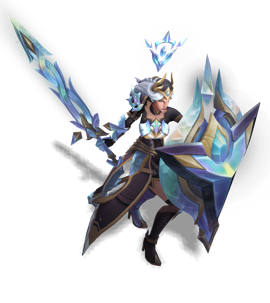Tenacity is a vital in-game stat in League of Legends that reduces the duration of most crowd control (CC) effects inflicted by enemies. Often referred to as “crowd control reduction,” it allows champions to recover more quickly from abilities like stuns, roots, and fears, increasing their survivability and effectiveness in teamfights.
How Does Tenacity Work?
Tenacity operates on a simple percentage system. The higher your tenacity, the shorter the duration of eligible CC effects. For instance, if you have 30% tenacity, a 2-second stun will only last for 1.4 seconds.

It is important to note that tenacity does not affect all crowd control. It is effective against:
- Stuns, Slows, Roots, Fears, Taunts, Silences, and Charms.
However, it has no effect on:
- Knock-ups, knockbacks, or other airborne effects.
- Suppressions (e.g., Malzahar’s ultimate).
- Nearsight, Drowsy, or Stasis effects (e.g., Zhonya’s Hourglass).
When a champion gains tenacity from multiple sources, the effects stack multiplicatively, not additively. This means that stacking several sources of tenacity results in diminishing returns.
For example, two items each providing 30% tenacity do not grant a total of 60% tenacity; instead, they combine for an effective 51% reduction (because 0.7 × 0.7 = 0.49, which is a 51% reduction). The minimum CC duration you can obtain via tenacity is typically 0.3 seconds, and the stat is capped at a maximum of 100%.
How to Get Tenacity
Tenacity can be acquired from several sources, allowing players to strategically build it into their champion’s kit based on the enemy team composition. Common sources include:
- Items: The most popular source is Mercury’s Treads, which grants 30% tenacity. Other items like Elixir of Iron (25%) and Silvermere Dawn (temporary) also provide the stat.
- Runes: The Precision tree offers the Legend: Tenacity rune, which provides a stacking bonus up to 30%. The Resolve tree’s Unflinching rune grants tenacity that scales with your champion’s missing health.
- Champion Abilities: Some champions, like Garen or Ornn, have abilities or passives that grant them or their allies temporary or permanent tenacity.
Why Is Tenacity Important?
Tenacity is a crucial defensive stat, especially against enemy teams with a high amount of crowd control. It can be the difference between escaping a gank and getting chain-stunned to death.
By strategically building tenacity, a champion can survive long enough to fight back, protect their allies, or escape a dangerous situation. It’s a key tool for adapting your build to counter a CC-heavy team composition, ensuring you remain a threat on the Rift.
Written by:
Christian


